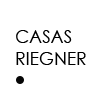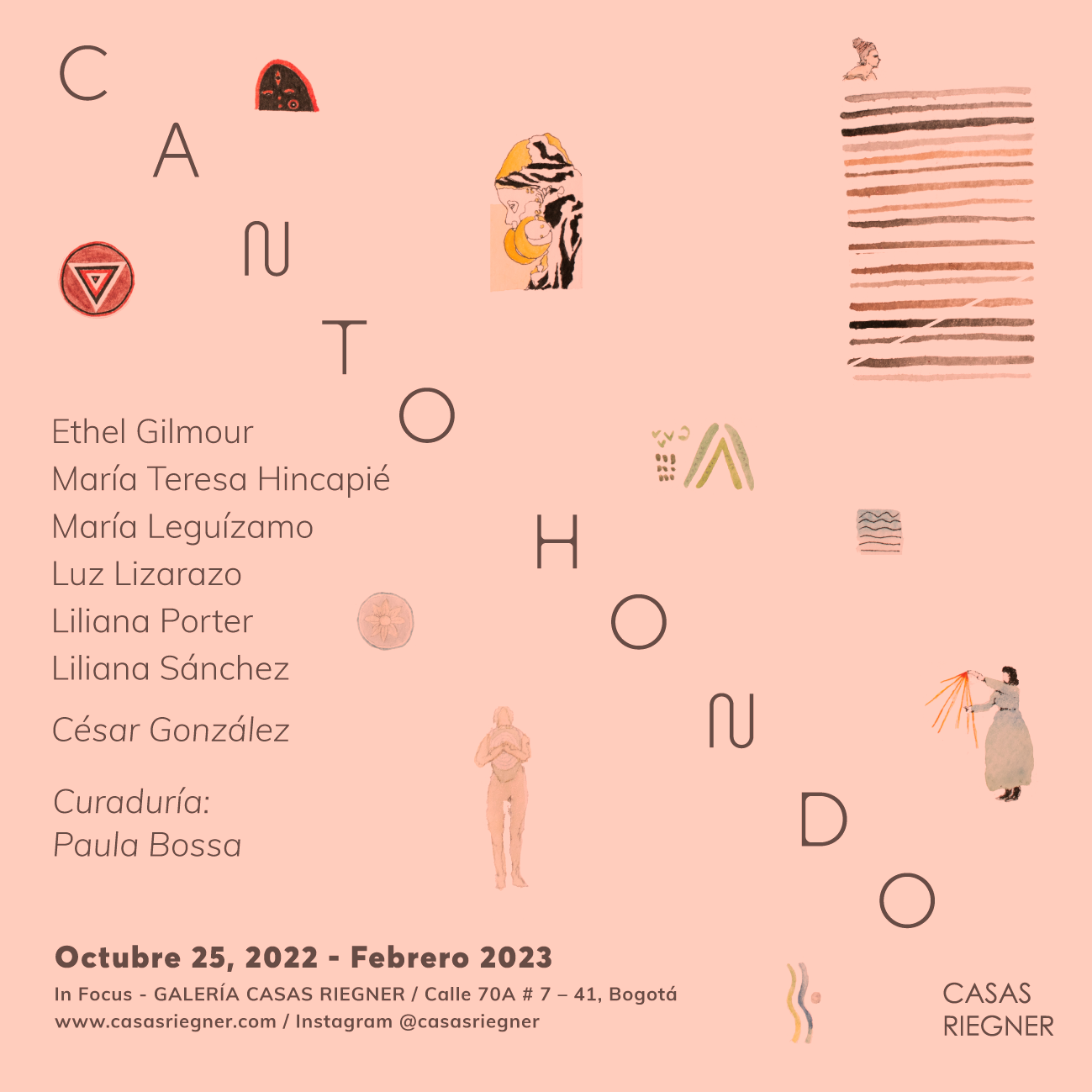Canto hondo at In Focus
We are pleased to announce the opening of Canto hondo, next thursday, October 25th, in the framework of ARTBO I Feria 2022. This group exhibition, curated by Paula Bossa, brings together works by Ethel Gilmour, María Teresa Hincapié, María Leguízamo, Luz Lizarazo, Liliana Porter, Liliana Sánchez and Cesar González
Canto hondo [Deep Song] fixes its gaze on the inner world of the feminine, specifically on the instinctive nature or wild woman[1]—that wise, intuitive, creative, and visceral force residing in the depths of every woman's soul that is often overshadowed by "over-domestication" or "exclusion by one's surrounding culture." It likewise introduces a masculine voice that integrates and embraces the essence of the wild feminine, managing to renew and redefine what we understand by masculinity.
Singing, in the words of writer and psychoanalyst Clarissa Pinkola Estés, “is a special form of language that makes it possible to achieve things that the spoken voice cannot.” It is also the language of the soul, an expression of truth, of personal power and of one's own needs.[2] A vessel of feminine songs, Canto hondo acknowledges and exalts the deep and enigmatic voices of artists María Teresa Hincapié, Ethel Gilmour, Liliana Porter, Luz Lizarazo, Liliana Sánchez, and María Leguizamo who, through their sensitive and evocative pieces, fully reveal their natural essence. Simultaneously, the artistic voice of Cesar González is materialized in intimate drawings, the majority of which are replete with symbols alluding to mythology and the great women of history. These are integrated to uphold and respond to feminine essence, thus revealing aspects of masculinity that transcend the deep-rooted and obsolete patriarchal frameworks that have long been used to understand the role of men in our society.
To speak of a deep voice is to speak of our inner world, that intangible, complex universe in which dwell light and shadow, of that which escapes description in words yet we know embraces the deepest and most intimate part of every human being. Rarely do we allow this world be seen for fear of being judged or because excessive ego or intellectualism forbids or masks it. However, to connect with this universe there must be a longing to do so, as well as willingness to delve into the deepest recesses. We arrive there through activities that require altered consciousness, such as meditation, writing, singing, dance, and artistic creation, among others.
Canto hondo is an invitation to open the door to that divine feminine force, essential to women, because as explained by Pinkola Estés, “She is their regulator, she is their soulful heart, the same as the human heart regulates the physical body.” For men, this force lends to greater awareness, rootedness, and compassion. In the words of artist Cesar González, “Visiting with feminine energy is not about the masculine becoming more feminine, but about better integrating the masculine. It is about discovering more about these archaic forces that belong to the wild, but to shed ever more light on the experience of the masculine in order to accompany a femininity connected to its instinctive essence.”
Let us then free our deep voice as González has done in his work by making technical and emotional reflections on the work of six female artists—not only to underline his admiration for them, but to resignify his own masculine voice. Meanwhile, these women bare their souls through the use of “tangible ways to soften old scar tissue, balm old wounds, and envision anew.”[3]
Paula Bossa
Curator
[1] The book "Women Who Run with the Wolves" by writer, Jungian psychiatrist, poet, and singer Clarissa Pinkola Estés uses stories from different cultures to examine and understand the wild woman archetype, and is the starting point and inspiration for the creation of this exhibition.
[2] Clarissa Pinkola Estés, Mujeres que corren con los lobos (Barcelona: Ediciones B.S.A,2005), 43.
[3]Pinkola Estés, 28.




